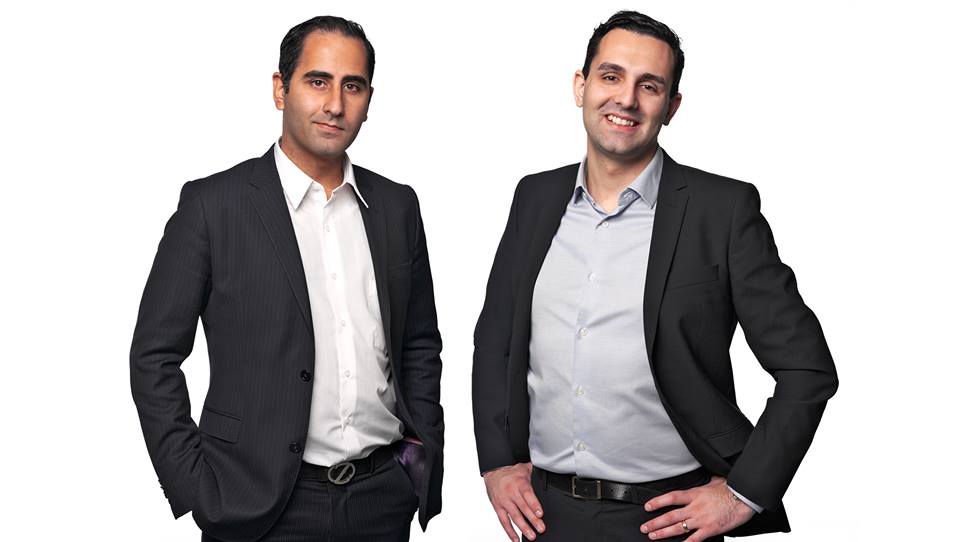KTH duo behind fast-growing mobile app
Business
What started as a hunt for furniture by two KTH graduates has led to one of the world’s fastest-growing mobile apps.

The reverse number look-up app Truecaller is on its way to becoming a household name in India and other fast-growing economies. Behind its success are founders Alan Mamedi and Nami Zarringhalam, two graduates of the Computer Science master's programme at KTH Royal Institute of Technology.
“Yesterday, we hit a new record, we got 133,000 new users in one day,” Mamedi says, as he prepares for the weekly company breakfast at the start-up’s headquarters in a sunlit Stockholm loft. “And it’s all organic. We don’t put any marketing money into acquiring users. It’s just word of mouth.”
From the start, Mamedi and Zarringhalam, the company’s CEO and CSO, knew they were on to something. Truecaller, which works like a cross between a phone book aggregator and social network, enables users to search numbers and names for more relevant results.
The app fills a void in telecom markets where a majority of users are pre-paid and not even the mobile operators know the names on the accounts. India is one such market. On the subcontinent, Truecaller has gotten endorsements from everyone from Bollywood actresses and football stars to high school students.
“There are one billion phone numbers in India and 97 percent of them are pre-paid,” Mamedi says. “The thing with India is they do business over the phone, they don’t send email. And their pace is hectic. For people between 24 and 55, being able to see who is calling has helped them to do their business better.”
Mamedi says the need for this screening function became apparent to him as he was finishing his studies at KTH. More friends and business contacts were moving abroad, and changing their numbers, he says. “Sometimes you’re very busy and your phone rings – you want to know, ‘Should I prioritize this call?’. It became a problem, so we built something we could use ourselves.”
The client that he and Zarringhalam designed for Truecaller was initially based on a web crawler the two developed in 2008 while shopping online for furniture for their apartments. “We built the backend for Truecaller based on our furniture crawler’s capabilities,” he says.
Birth of a company
The pair published the client on a mobile web developer forum in 2009 and got 10,000 downloads in the first week.
“We started thinking that this could actually be something really good. We started calling friends who could put us in touch with angel investors.” On Christmas Eve, 2009, the company signed its agreements with investors and Mamedi quit his job at a local software company.
With a tiny supporting staff, including an unpaid volunteer who would later become manager of marketing, Mamedi and Zarringhalam put the engineering skills they learned at KTH to work, configuring routers and setting up and testing load balancers.
Then they put their entrepreneurial skills to task, turning the social network concept on its head. “In a social network such as LinkedIn or Facebook, you have to go in and select your friends,” he says. “We did it the other way. We look in your phone book and see who is in it. Based on the information in your phone book, we have we can actually suggest people to you. If you do a search on a single given name, we’ll rank the right based on who you know.”

Valuable patterns emerge in the social graph of phone numbers. “Each person has between 100,000 and 500,000 people in their circles,” Mamedi says. “We have something similar to LinkedIn’s first, second and third line connections, but we did it the reverse way. On LinkedIn, they know who you are, but we don’t know who our users are. We didn’t ask for that. We just know who you know. So, we can say this user who isn’t in your phone book has people in their phone book that you also have. This makes the whole search algorithm more relevant.”
That social graph has enormous appeal to younger users, Mamedi says. One teenage would-be entrepreneur he met in India explained that he uses Truecaller “to verify” the identities of people he meets through chat apps. “For him it’s a social validation tool,” he says. “I think that is quite common.”
Today, with 30 employees, the company has a target of 200 million users by the end of 2014. But unlike the past few years, Truecaller will soon get competition. Google recently announced its Android version 4.4 with caller ID connected to Google Plus.
Mamedi sees the challenge as an energizing influence on his company. “We haven’t had any real competition. But now, looking around at the people here, they’re more motivated than ever.
“Now we get a real competitor. It’s like David versus Goliath.”

